Archeology programmer
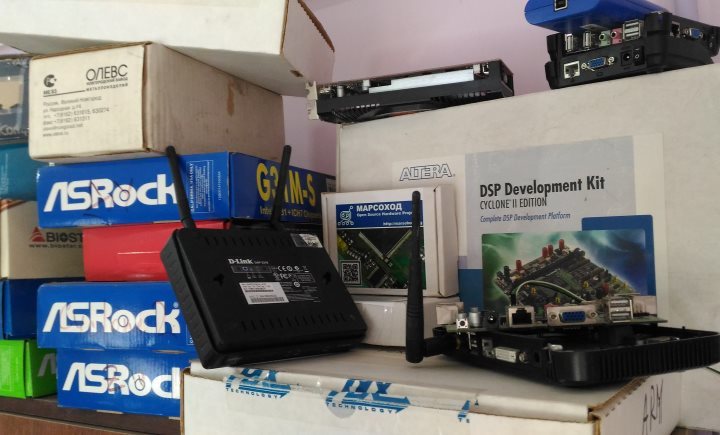
Last Saturday I decided to hold a “subbotnik” and finally put things in order on the shelves and cabinets.
In the old boxes, among all kinds of different equipment, different boards, the developer of whales and packs of old disks discovered several interesting instances of devices, just real artifacts of antiquity. A whole story is connected with these artifacts, which I would like to tell.
Here is how it was. In the distant, distant year, we received an order to develop firmware for the Cypress CY7C63723 chip. It was such a PS / 2-USB microcontroller. Task: write the firmware for this chip. But there was one caveat. The chip was designed to convert the protocol from PS / 2 to USB, but you had to connect two PS / 2 devices, that is, you need to connect a PS / 2 mouse and a PS / 2 keyboard using one such USB converter chip. The chip would have to be installed on the Jetway motherboard (if the memory does not change).
More precisely, it was even like this: this task was already being done by some developer, but something did not work out for him. The source code was given to us and they said that it was urgent to fix and redo it, but for it to work. In addition to the source code of our unfortunate predecessor, then we got this ...
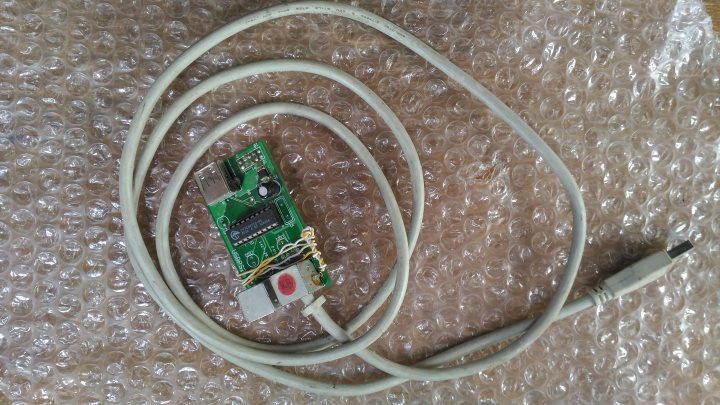
This is a prototype of the Two-PS / 2-to-USB converter, which you had to program. In fact, this is only a mock-up, the chip was then installed directly on the motherboard to give an additional mouse and keyboard. It was assumed that this will be a motherboard for two users simultaneously, a multi-user computer.
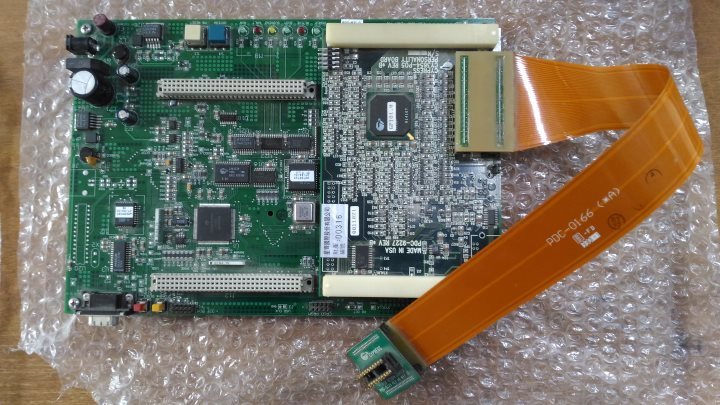
Cypress CY7C63723 emulator! Such a small chip and such a large emulator. Such are the technologies. Since the chip was a one-time, with a single firmware (OTP - One Time Programmable), it is impossible to just take and develop the firmware. You can’t immediately sew up and try - it is too long and wasteful. Therefore, Cypress supplied developers with such strange devices - emulators of microcircuits. Compiled the program, loaded the microcircuit into the emulator, the microcircuit simulator is inserted through a loop into the socket on the board of the future device - you watch how it works. Now I'm not sure, but it seems there was even an in-circuit processor debugger.
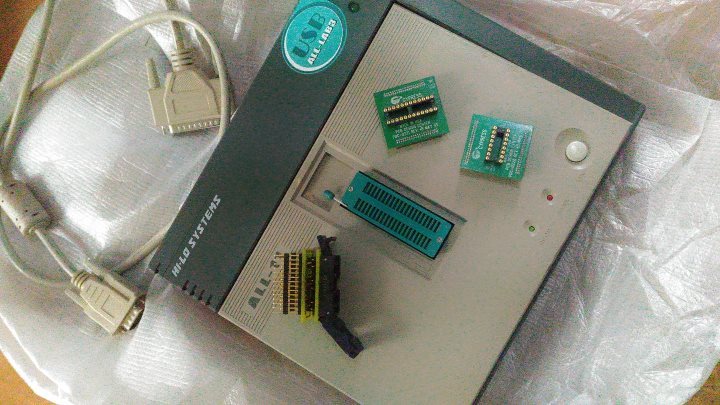
Here is a universal programmer. He also had a couple of dozen clean Cypress chips, but where are they now?
When I discovered these pieces of iron in old boxes, curiosity appeared. Can I find the sources of those programs? How long has all this been?
It’s all simple now. I now have every new laptop has a significantly larger hard drive than the previous one. It turns out that you buy a laptop and rewrite the entire old small disk onto its large disk. The first laptop had 90 GB, the second 320 GB, and the last laptop 1 TB. Again - now there are "clouds" and GIT. And then the archives were stored on CDs. Sometimes, just in case, several discs were recorded, for sure.
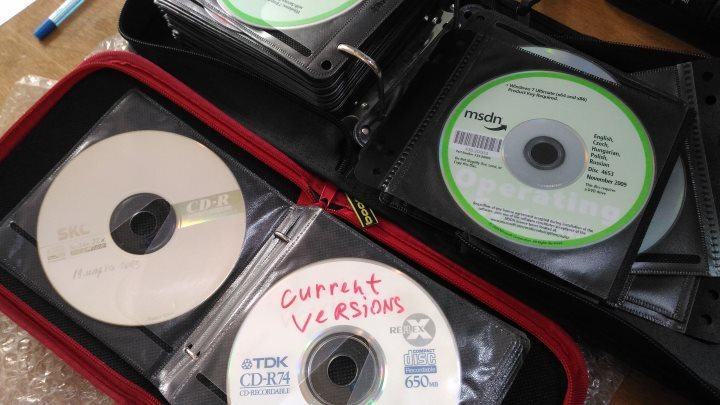
To find old programs on old disks is really a difficult task. But - found! It dates back to 2003 - it was about 13 years ago. Well, on occasion, my advice of the day: "Never label discs with the phrase Current Versions."
So ... There were 2 people in the team for this task, we took all the zeal, although we had no idea about USB or about Cypress microcircuits.
To describe the essence of what is happening, I’ll talk a little about the CY7C63723 chip. In this microcontroller lived-were:
- 14-bit pointer to the executable PC (Program Counter) command;
- 8-bit battery, A;
- 8-bit index register, X;
- 8 pointer stack of commands, PSP (Program Stack Pointer);
- 8 pointer data stack, DSP (Data Stack Pointer);
And that’s almost all ... well, of course, different methods of addressing are understandable. Naturally, you need to write in assembler. Of course, inside the microcontroller there is still all the peripherals traditional for microcontrollers: a timer, GPIO and interrupts from them, a USB function and so on.
This is me now, considering the old documentation for this microcircuit (I found it on disks), I recall this project and am surprised at this miracle. So that you fully feel the full power of the microcontroller, I will give a fragment of the list of commands:
NOP - 4 measures
INC A - 4 measures
INC X - 4 measures
INC [EXPR] - 7 measures
INC [X + EXPR] - 8 measures
ADD A, EXPR - 4 measures
ADD A, [EXPR] - 6 measures
ADD A, [ X + EXPR] - 7 measures
...
Despite the clock frequency of the microcontroller at 12 MHz, in fact it turned out to be not at all fast - all megahertz ate beats-per-command.
Most interestingly, we were able to quickly figure out how it should work, quickly fixed everything, flashed the first chips, tested it, and the keyboard and mouse work, the LEDs on the CAPS, NUM, LOCK keyboard work. Hooray, everything is fine, everyone is happy and happy!
But no. After a week or two, the customer says that he is not working. We are trying to find out - nothing really can be understood. There is an intermediary between us and the end customer. That is, a German company orders us, and a Taiwan company orders them. Emails from Taiwan are almost impossible to read. They are written in “Chinglish” - this is when a person thinks in Chinese, and writes in English - it is difficult to decipher. In the end, we agreed that they would send us a program in which our PS / 2-USB converter does not work. They say that it works in all programs, but specifically in this program - no.
Well - trying to deflate their test program. Year 2003, we still use a dial-up modem, the connection breaks all the time, the program is very large, it does not work out. With some N-th attempt there, we pump out ... (drum roll) Doom2. But what? Why? How so?
It turns out that everything is very simple: you often need to press, press the keyboard keys to go, run and jump, and simultaneously rotate and shoot with the mouse. And we never did. After all, we tried like all normal people: we tried the keyboard keys - the characters in the editor are typed, then we tried the mouse - it goes. But it happens ...
I had to completely revise the microcontroller program. Now, with a detailed analysis, it became clear that with simultaneously flying characters from both PS / 2 devices, it is extremely difficult to process DATA and CLK signals on two ports. I will not give waveforms of signals here, they can easily be found on the Internet, at least here marsohod.org/11-blog/56-ps2. The CLK signal frequency in PS / 2 can be up to 18KHz. It seems to be a very low frequency, but if you count, it turns out not at all fun. The ratio of PS / 2 CLK frequencies to the frequency of the microcontroller processor: 12000000/18000 = 666 (horror). With an average command length of 5 clock cycles, it turns out that between the two edges of the PS / 2 block can be executed no more than 130 commands of the microcontroller. And we have interrupts configured for four signals from two PS / 2 ports: from DATA0, from CLK0, from DATA1, and from CLK1. The worst case is when the edges of some signals coincide accidentally - the ports are asynchronous. If in a row there are two interrupts from different ports, then we get generally 60 cycles left for interruption ...
In general, I had to literally take into account the duration of each team. Let me give you a fragment of the assembler code of the interrupt handler, where many lines cost how many clock cycles a command will take:
org 0d00h
snd_recv_tabl0:
jmp recv_startbit0
jmp recv_bit0
jmp recv_bit1
jmp recv_bit2
jmp recv_bit3
jmp recv_bit4
jmp recv_bit5
jmp recv_bit6
jmp recv_bit7
jmp recv_parity0
jmp recv_stop0
jmp send_startbit0
jmp send_bit0
jmp send_bit1
jmp send_bit2
jmp send_bit3
jmp send_bit4
jmp send_bit5
jmp send_bit6
jmp send_bit7
jmp send_parity0
jmp send_stop0
jmp send_stop1
rise1:
rise0:
pop a
reti
capture_a_isr:
;here we service interrupts from ps2 port 0
;we must make it as short as possible...
push a ;[5]
iord port0 ;[5]
iord port0 ;[5]
rrc ;[4]
jc rise0 ;[4]
mov a,[status0] ;[5]
asl ;[4]
jacc snd_recv_tabl0 ;[7+5] - 44 ticks
;-------------------------------------------------------------------------------
recv_startbit0_:
inc [status1]
mov a,PS2_WD_TIMEOUT
mov [ps2_wd_b],a
pop a
reti
recv_bit0_:
recv_bit1_:
recv_bit2_:
recv_bit3_:
recv_bit4_:
recv_bit5_:
recv_bit6_:
recv_bit7_:
iord port1
rrc
rrc ;now our strobed bit in flag C
mov a,[sh_in_lo_reg_p1]
rrc
mov [sh_in_lo_reg_p1],a
inc [status1]
pop a
reti
recv_parity0_:
inc [status1]
pop a
reti
recv_stop0_:
mov a,[flag_wait_fa_1]
cmp a,1
jz filter_fa1
mov a,[sh_in_lo_reg_p1] ;[5]
push x ;[5]
mov x,[fifo_head_p1] ;[5]
mov [x+fifo_p1],a ;[6] store our byte to fifo
inc x ;[4] increment fifo head
mov a,x ;[4]
pop x ;[4]
and a,00fh ;[4] fifo size is 16 byte?
mov [fifo_head_p1],a ;[5] save new fifo ptr for future
filter_fa1:
mov a,0 ;[4]
mov [status1],a ;[5]
mov [flag_wait_fa_1],a
mov [ps2_wd_b],a
pop a ;[4]
reti ;[8] - 63+44=107 ticks
nop
Of course, many details fade from memory, I simply don’t remember many details. I only know that the deeply redesigned program worked successfully even in Doom2. This is what life-counting does.
And you know what? Even now I was able to compile this old program of mine, I just launched the BAT file:
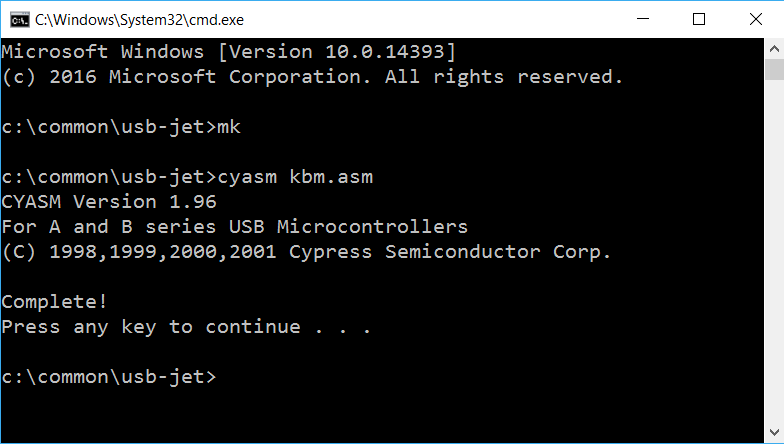
Interestingly, this story also had a sequel. After all, PS / 2 codes were converted to HID codes (PS / 2 protocol was quite complicated in itself, see marsohod.org/11-blog/57-ps2proto ). And when the customer is from the South-East country, then some keys there are not quite the same as ours.
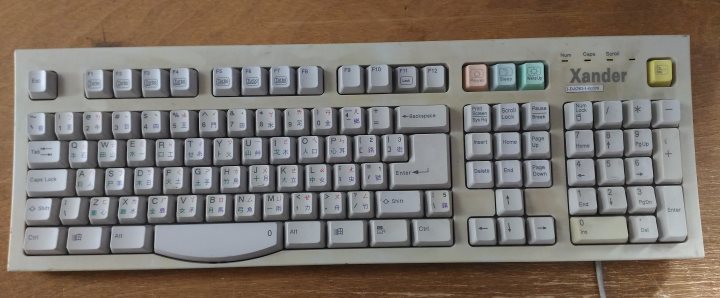
During archaeological excavations in our office, I found a typical keyboard of the time - it was sent to us for testing. There were other exotic options, but not all survived. I remember there was a keyboard with extra Katakana and Hiragana keys - and what would it mean? And the customer demands that they work. How should they work? What should happen when you click them?
They did this: they took two identical computers and installed them on the same PC - English windows 2000, and on the second PC - pure Japanese Windows 2000, all OSs were taken from the MSDN subscription. Two computers are needed to correctly answer questions in the dialogs during the installation of Windows - we cannot read, nor can we translate. That parallel installation on two PCs somehow saved. Later, the keyboard was connected to a PC with Japanese Windows installed and pressed these controversial keys trying to figure out what should happen when they were pressed. Here somehow problems were solved. How long ago it was ...
Well, what happened: as a result, it was not possible to disassemble on the shelves and put them in order. On the contrary, he lit up all the boxes and boxes in search of other valuable and interesting artifacts for the archaeologist ... There were so many interesting things ...
